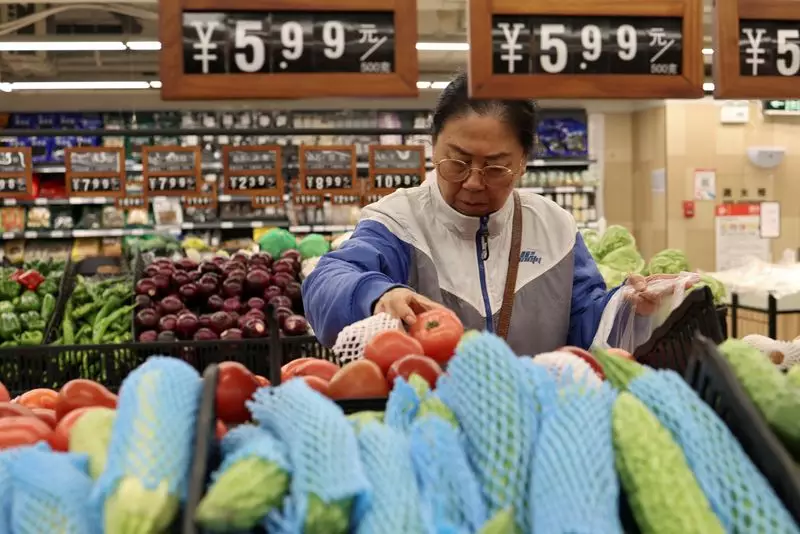China’s economic journey in recent months has been marked by a series of challenges that underscore the fragility of its recovery. Recent indicators suggest that the country’s economy is on track to experience a slowdown during the third quarter of 2023. This deceleration primarily stems from an ongoing downturn in the property sector coupled with lackluster consumer spending. Analysts predict a growth rate of 4.5% for the year-on-year period from July to September, a decrease from the 4.7% recorded in the previous quarter. This decline marks the lowest growth rate since the beginning of the year, reflecting the persistent difficulties that continue to plague the world’s second-largest economy.
In response to the economic downturn, Chinese authorities are facing mounting pressure to implement decisive stimulus measures aimed at revitalizing growth. Amid concerns that they may fall short of the government’s ambitious 2024 growth target of approximately 5%, policymakers are contemplating more aggressive strategies. Recent forecasts suggest that while growth may register at 4.8% in 2024, it is still likely to lag behind the official target—a concerning sign for a nation accustomed to higher growth trajectories. Furthermore, projections indicate that growth could proceed to a further decline, reaching 4.5% in 2025, prompting a reevaluation of current economic strategies and sectors that require greater focus.
Historically, China has relied heavily on infrastructure and manufacturing investments to drive economic growth. However, there is a noticeable shift in focus towards stimulating domestic consumption as a new growth engine. While this pivot is essential for sustainable economic health, markets remain anxious, waiting for concrete details surrounding the proposed fiscal stimulus package. This transition is critical, particularly as the country grapples with deflationary risks exacerbated by the ongoing property crisis and increasing local government debt.
On a quarterly basis, economic growth is projected to be 1.0% for the third quarter, an improvement from the 0.7% seen in the second quarter. Nevertheless, the uptick comes amid mixed signals from various economic sectors. Analysts expect that while retail sales may experience a boost, investment levels are likely to decline. This juxtaposition raises questions about the overall health of consumer confidence and spending behaviors, essential elements of a robust economy.
Despite exports serving as a potential bright spot earlier in the year, there has been a noted decline in this sector. China’s export growth slowed dramatically in September, accompanied by a drop in imports that undershot expectations. This downturn suggests that manufacturers are feeling the pressure to reduce prices in order to clear out inventory ahead of imminent tariffs from key trade partners. As a result, there is a growing concern about deflationary pressures, which threaten to undermine economic stability. Recent trends indicate a decline in consumer inflation rates, while producer price deflation continues to intensify, further compelling policymakers to take proactive measures to stimulate demand.
In light of these emerging challenges, Chinese officials have announced a significant increase in debt levels aimed at rejuvenating the economy. Reports suggest that China could raise an additional 6 trillion yuan (approximately $842.6 billion) through special treasury bonds over the next three years—a measure intended to provide a crucial boost amid ongoing fiscal stimulus discussions. Furthermore, the central bank has introduced some of the most aggressive monetary policy measures since the onset of the COVID-19 pandemic. These actions include interest rate cuts and liquidity injections aimed at bolstering both the property and stock markets.
As China navigates through these turbulent economic waters, the government faces the daunting task of addressing both immediate and long-standing challenges. While the commitment to strengthen consumption is promising, the efficacy of the proposed stimulus measures, alongside the broader economic sentiments, remain in question. The road to recovery appears fraught with complexities, demanding vigilant monitoring and adaptable strategies to foster sustainable growth in a changing global landscape.

